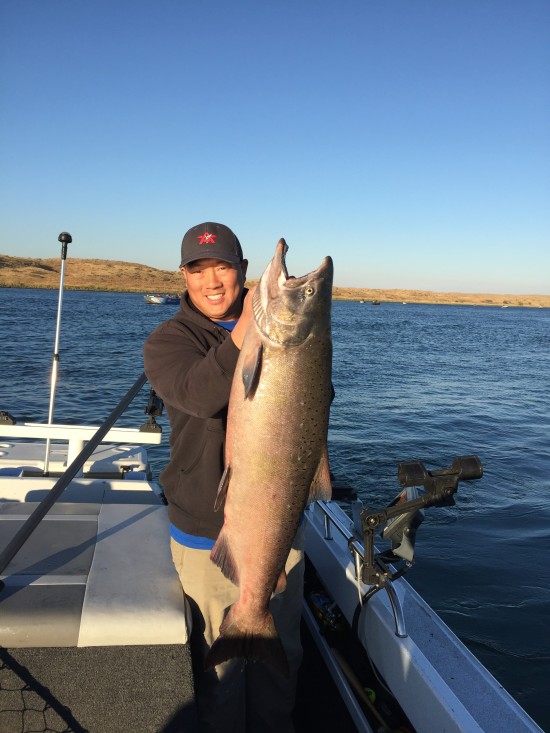It Wasn’t That Long Ago …
Man, what a difference three years makes.
On this day in 2015 I posted* that Columbia River salmon managers had upped their fall Chinook forecast to a staggering 1,095,900.

They were off by a mile — 210,000 miles.
The final estimate is that 1,305,600 upriver brights and tules made it to Buoy 10 that year.
Of those, 954,140 were counted at Bonneville, the most on record.
And more than all but two other entire annual returns of Chinook — i.e., springers, summers and fall fish — at the dam since counts began in 1938.
The fishing was preposterous — 36,535 kings kept at Buoy 10, 41,525 on the Lower Columbia, 13,260 from Bonneville to Highway 395. Treaty and NT comms got their shares.
We were all smiles — our smiles couldn’t have been any wider or we would have broken our faces.
“These are the good ol’ days for Chinook, ladies and gentlemen,” I wrote later that month.

Looking back, it was the culmination of three outstanding years of salmon fishing, but there were troubling signs, other blogs I wrote that month show.
Sept. 23: Columbia Early Coho Forecast Reduced Sharply; Snake King Return On Record Pace: “Even as what could be a record return of Snake River fall Chinook heads for Idaho, Columbia salmon managers took the fishbonker to this year’s prediction for early-run coho, smacking it hard from an expected 140,000 to just 27,000 past Bonneville.”
Sept. 15: Clearwater Coho A No-go, IDFG Announces: “This year’s run of coho up the Columbia is not living up to expectations, at least not yet.”
Sept. 11: No Plans To Halt State Humpy Fishery On Skagit: “Initial netting by the Upper Skagits turned up just 10 percent of the expected catch during what is typically the peak of the run of the odd-year fish.”
Earlier that summer hundreds of thousands of sockeye died as they migrated up the too-warm Columbia, as did dozens of oversize sturgeon.
Summer streams were bone dry due to the previous winter’s snowpack failure. Many waters were closed or under restricted fishing hours. Forest fires roared in the mountains and hills.
The Blob was hungry in 2015, though the high numbers of Columbia kings and relative snappiness of starving coho and pinks initially hid it from us, and we foolishly didn’t consider how long the North Pacific’s hangover would last.
Now in 2018 we’re at the other end of the salmon cycle.
ODFW’s Tucker Jones said that if the fall king run continues tracking as it has, it will be the lowest return since 2007, when 220,200 limped into the mouth of the Columbia.
I wonder if it won’t ultimately come in at lows not seen for two and a half decades — the 214,900 in ’93.
Funny how that number and the offage between the mid-September 2015 runsize update and what it ultimately came in at are so close.

There is some hope, though. Last year’s run spiked unexpectedly after the usual high-count days, so we’ll see.
But in the meanwhile Chinook as well as coho and steelhead fishing have been closed from Buoy 10 all the way to Tri-Cities, and the steelie bag reduced to one hatchery a day in the Snake River basin.
CRITFC postponed a gillnet opener decision, though platform fisheries remain open, and nontreaty commercial fishing in the SAFE zones were shut down.
In the usually productive free-flowing Hanford Reach, the adult URB limit has been cut to one a day.
Just three falls ago, we harvested a record 33,885 in the Reach, and that November I wrote, “What a year!!!!!!!! Remember this one — it truly is The Good Ol’ Days.”
There were warning signs, but to hit the bad old days after such highs so fast is a reminder that the runs do ebb and flow.
Hopefully the closures and restrictions WDFW and ODFW have announced help rebuild the stocks and get us out of this hole and back on the water sooner.
*Editor’s note: Hat tip to Mike Fisenko who brought back this memory on Facebook.
